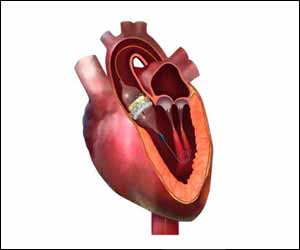- Home
- Editorial
- News
- Practice Guidelines
- Anesthesiology Guidelines
- Cancer Guidelines
- Cardiac Sciences Guidelines
- Critical Care Guidelines
- Dentistry Guidelines
- Dermatology Guidelines
- Diabetes and Endo Guidelines
- Diagnostics Guidelines
- ENT Guidelines
- Featured Practice Guidelines
- Gastroenterology Guidelines
- Geriatrics Guidelines
- Medicine Guidelines
- Nephrology Guidelines
- Neurosciences Guidelines
- Obs and Gynae Guidelines
- Ophthalmology Guidelines
- Orthopaedics Guidelines
- Paediatrics Guidelines
- Psychiatry Guidelines
- Pulmonology Guidelines
- Radiology Guidelines
- Surgery Guidelines
- Urology Guidelines
Fortis Malar doctors successfully replace dysfunctional aortic valve by TAVR

Doctors replace dysfunctional bioprosthetic heart valve with TAVR procedure
Chennai, 4th July 2019: Fortis Malar Hospital recently performed a minimally invasive Transcatheter Aortic Valve Replacement (TAVR) valve-in-valve procedure on a 65-year-old man with a dysfunctional bioprosthetic aortic valve. This rare procedure was conducted by a team of expert doctors led by Dr E Babu, Consultant Heart Failure & Interventional Cardiologist at Fortis Malar Hospital, Adyar, Chennai.
This patient was admitted for severe restenosis and dysfunction of his bioprosthetic valve. Around 14 years ago, he had undergone open-heart surgery and aortic valve replacement with bioprosthetic valve for calcific aortic valve stenosis (narrowing). Aortic stenosis — occurs when the heart's aortic valve narrows and this narrowing prevents the valve from opening fully, which obstructs blood flow from the heart into the aorta and onward to the rest of the body. After evaluation, it was found that he had an intermediate risk for open-heart surgery. Hence, he has advised the Transcatheter Aortic Valve Replacement (TAVR) procedure. He successfully underwent this TAVR procedure and got discharged within 48 hours without any complications.
Commenting on the procedure Dr E Babu, said “Currently TAVR procedure is indicated for treating patients with stenosed (narrowed) native aortic valve or dysfunctional bioprosthetic aortic valve who are either inoperable or have intermediate to high risk for open-heart surgery. Conventionally patients were being offered ‘Surgical Aortic Valve Replacement’ which is a major procedure involving open-heart surgery, general anesthesia, intubation, mechanical ventilation, hospitalization for a week and removal of stitches. On the contrary, TAVR is a recently introduced novel percutaneous ‘no-scalpel, no-stitch’ minimally invasive procedure which can be performed under local anesthesia with an average of 3 days of hospitalization. The patient can be mobilized on the next day after the procedure”.
TAVR is a minimally invasive percutaneous procedure usually performed through puncture of the blood vessel in the groin. The catheter will be passed over a wire across the aortic valve in the heart. New transcatheter valve will be balloon expanded and implanted within the previously stenotic bioprosthetic valve as a valve-in-valve procedure.

Disclaimer: This site is primarily intended for healthcare professionals. Any content/information on this website does not replace the advice of medical and/or health professionals and should not be construed as medical/diagnostic advice/endorsement or prescription. Use of this site is subject to our terms of use, privacy policy, advertisement policy. © 2020 Minerva Medical Treatment Pvt Ltd